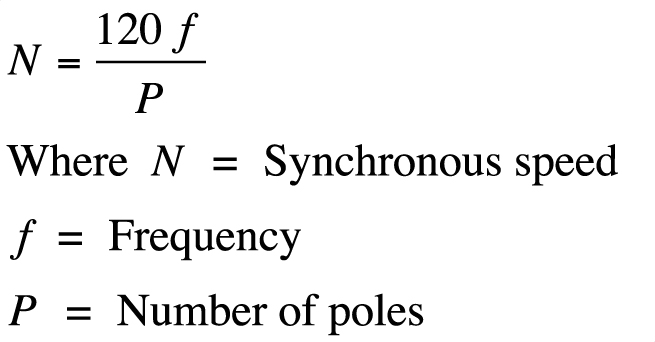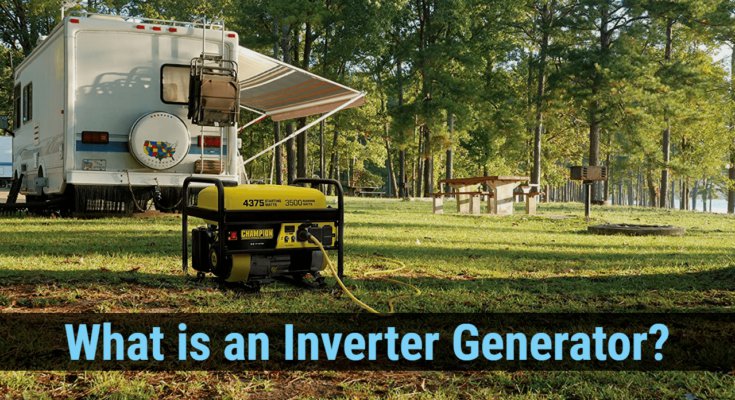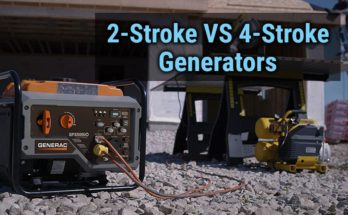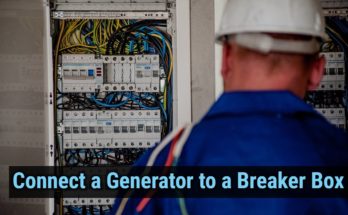An Inverter Generator is a more sophisticated electrical tool compared to those regular generators. It can keep your whole house running if there is no electricity for several hours without damaging your TV or Fridge.
As you might be knowing, inverter generators provide more efficiency and run smoothly and more quietly while providing the cleanest power than any non-inverter generator. So, you can charge or power your sensitive electrical equipment without reducing its lifespan or causing electrical heating in it.
Now, let’s see how this inverter generator works.
Are you looking for Inverter Generator? Check out our reviews of Best Inverter Generators with an in-depth comparison of power output, runtime, starting mechanism, noise level, warranty, and special features.
Table of Contents
The Working Of An Inverter Generator
Before we tell how an inverter generator works, first let us understand how conventional or non-inverter generators work.
Working of a Conventional Generator
The inverter generator, as well as conventional generators, both use gasoline or diesel engines to generate a rotary motion. The mechanical energy of this rotary motion is converted into electrical energy by a principle called electromagnetic induction.
This induction process produces a voltage and frequency of 120 V and 60 Hz; this is a standard rating that is available at every electrical outlet of any house in the US.
Almost all domestic appliances and equipment are designed to work satisfactorily with this voltage and frequency value. So to keep them working, the same power needs to be supplied.
Why does the conventional generator need to maintain the same speed?
The conventional generator must run at a constant speed (3600 RPM) to constantly supply the power of 120 volts and 60 Hz frequency, which means it consumes the same fuel even if the load is less.
This is because the induced voltage and frequency obey the formula given below.

Here, N is the engine’s speed that it needs to maintain, f is the frequency of the generated voltage, and P is the number of poles in the rotating mechanism.
The number of poles is 2 for household generators.
Here our main concern is the frequency and the speed. As mentioned, all equipment works satisfactorily at 60 Hz-120V, and to generate 60 Hz frequency, the speed must be constant.
Let’s take the number of poles to be 4, now; to continuously supply the frequency of 60 Hz, the speed of the generator needs to be 1,800 RPM regardless of the load.
That’s where the inverter generators differ from the conventional generators in the mechanism to supply this needed power.
How Does Inverter Generator Differ from The Conventional Generator in Terms of Working
The inverter generator produces electricity in the same way, but it has some extra mechanism that gives it an edge over conventional generators.

In an inverter generator, the AC electricity is generated due to the induction phenomenon, which is then converted to DC, and then again it is converted back to AC. This process is accomplished by high voltage electronics components, which are arranged in a certain manner. These electronic components are controlled by the microcontroller, which you can refer to as a brain of a generator, for simplicity.
The topology of those high-voltage electronic components that are used to make those AC-DC-AC conversion processes known as converters and inverters; that’s why these generators are called inverter generators.
This conversion of AC power to DC and back again to AC eliminates problems like power spikes, high THD, and high noise, which couldn’t be resolved in those regular generators; In an inverter generator, the engine doesn’t need to run at a constant speed.
This is because the engine runs or uses fuel or changes its speed based on the power used from the generator’s terminals. Regardless of the engine’s speed, the inverter generator is capable of producing power with a 60-Hz frequency.
This control of output voltage and frequency is performed and monitored by the brain of the generator, and If you haven’t forgotten, it’s a microprocessor. It also gives commands to that high-voltage circuitry and changes the speed of the engine accordingly.
Again, this is a very complex machine, and It was just a basic understanding to explain how it is advantageous over the regular generator.
You will be surprised to know that this same power conversion technology is used in a solar generator for maximum clean power and low noise.
What are The Benefits of Having an Inverter Generator?
Inverter generators have many benefits over conventional generators.
First, they are fuel-efficient. In the case of conventional generators, it doesn’t matter if you are supplying a tiny night bulb or the whole house; the fuel consumption will be the same.

On the other hand, the inverter generators will change their speed and use less fuel according to load demand.
That being said, the speed of both generators will be different; the inverter generators run at a slower speed compared to conventional ones to supply the same load. It means the inverter generators offer quieter operation.
Besides, they are packed in cases (known as close-frame generators) to reduce the noise even further.
Inverter generators use less fuel to supply the same load, which means less fuel consumption and smaller tanks.
That’s why they are lightweight and heavily portable. And the main benefit is they produce clean electricity (less than 3% THD), which is not harmful to sensitive electronics like laptops, mobiles, etc.
Is there any Drawback of an Inverter Generator?
The inverter generators have so many advantages over conventional generators, but they aren’t ideal equipment; they have some drawbacks as well.
First and foremost, it’s their price point. A decent inverter generator with a few good features is going to cost you more than conventional generators. The high cost means more sophisticated features, and this may increase the complexity for some users.
Plus, if it stops working, then a regular generator repairer might not be able to repair it. You will need to take it to an experienced technician. But it is less likely to have a problem with the inverter generators.
The inverter generators are less powerful in their output capabilities than those of conventional generators, and it won’t be able to run your larger equipment. Still, if you want more power, then you can connect another inverter generator in parallel, but again you will have to purchase that other generator.
Also, inverter generators are more efficient when used on less load, and if you are looking for a generator to keep running at maximum load, then this may turn out to be a costly deal because the operating cost is more for inverter generators when used at a maximum load.





Thank you for the explanation; I use to repair CNC equipment that used servo drives for the variable speed spindle and axis drive motors (Phase modulated inverters) so I get the concept. Thanks again for you expertise!
Curt
I have a boat which has an ac.
It also has a 5000w generator which runs everything well. As a back up we bought a 4550w invertor gen. Runs assessories well except for ac. It has a water cooling pump, blower and compressor. When on invertor gen the ac blower and compressor keep turning on/off as gen revs high. Why?
Evans Miller,
I am looking for an inverter to power my refrigerator, widow ac 8000 btu, flat screen TV, computer and some lights when the powers goes out.
I will be connecting a inverter to my 1997 Nissan Maxima car battery which I will need to keep run to power the inverter.
Which inverter would I need to do this?
Also, can I run a inverter 24/7 without destroying my battery and alternator?
Please let me know.
Thank you for your time.
Bruce Crawford
Not a good idea Bruce, that will be a large draw of current which would discharge a car battery in a number of minutes, for the car alternator to keep its battery charged you would have to increase the car engine’s rpm’s considerably and no Nissan has a manual throttle plus you run the danger of overheating and the alternator might not put out enough amps even then. Buy a gas powered generator at least 3500 watts.